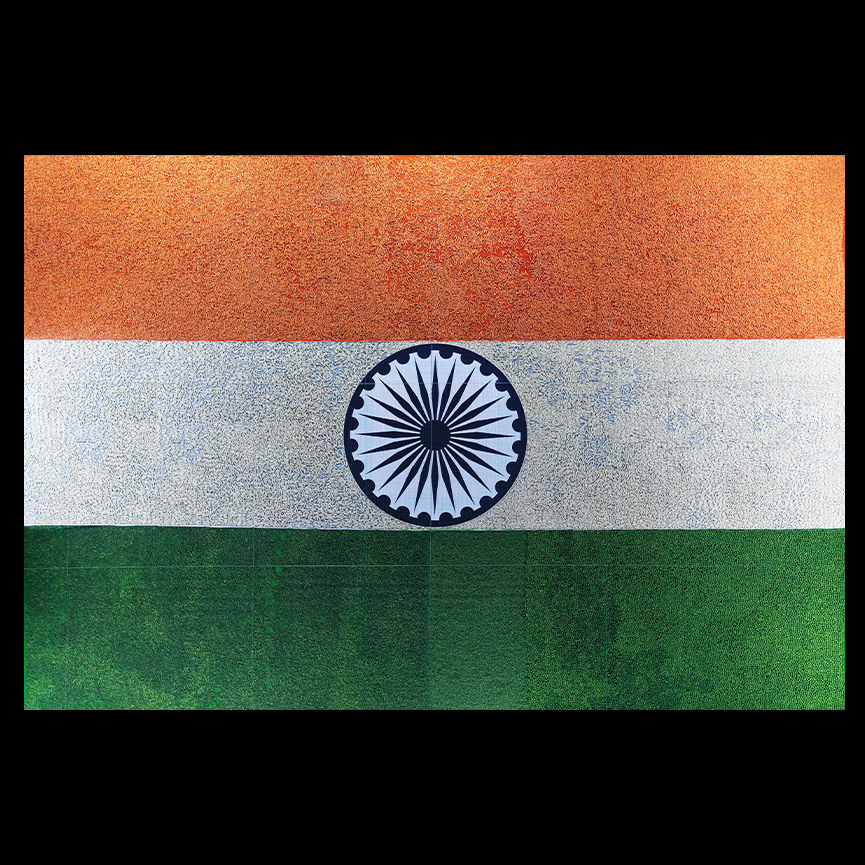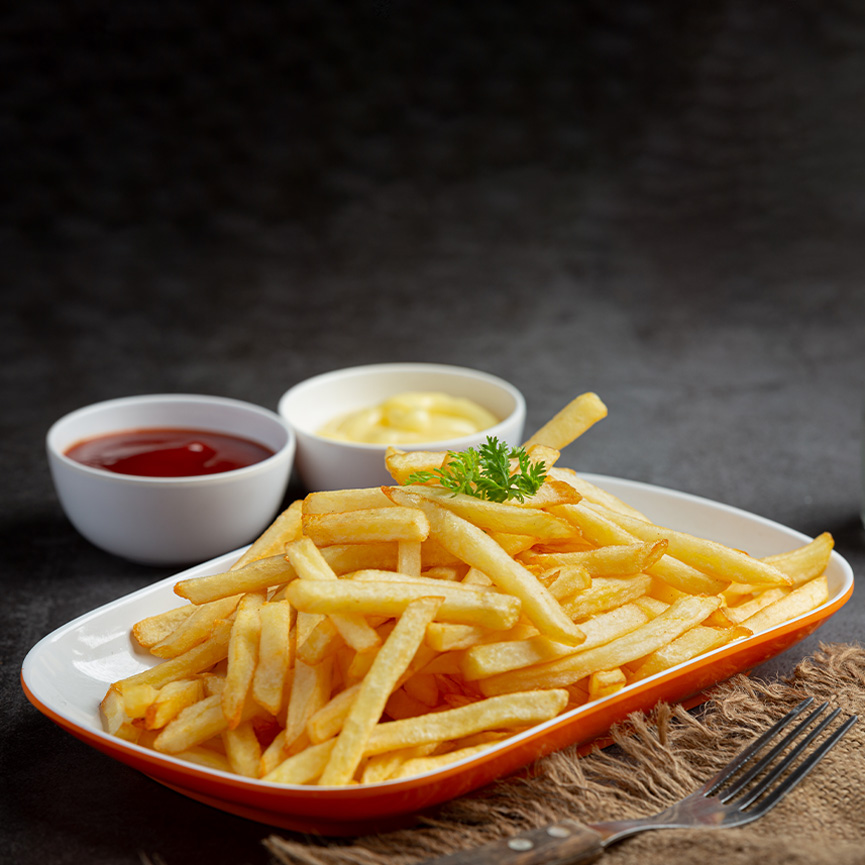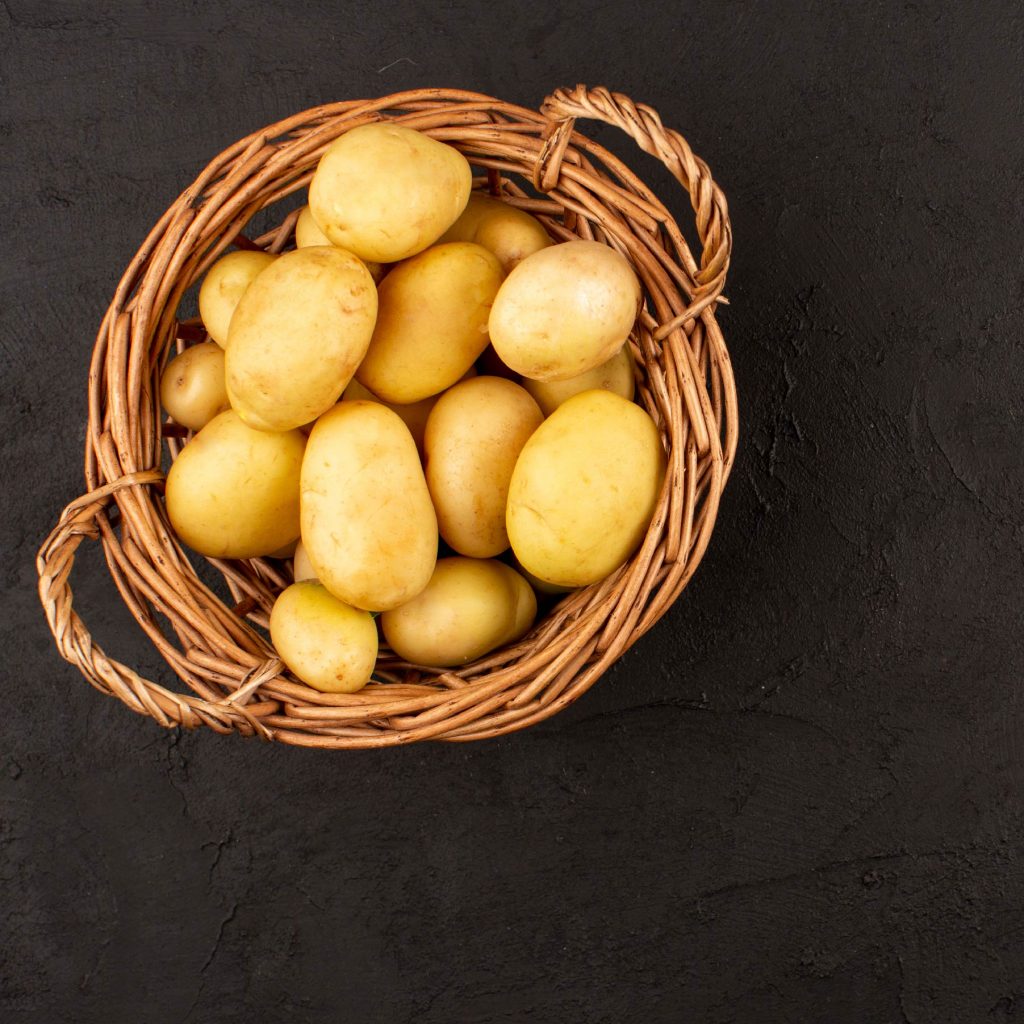Nutrition Starts from the Soil: Reaping What We Sow with Outgrow
Posted on October 11th, 2023

Where does food come from? How does it give us energy? As children, we may have wondered, and observed that the answer to these questions is something that we walk on every day. Soil has and always will play a vital role not only in the environment but also in human nutrition.
Nutrition is a vital part of health and development with regard to improving infant, child and maternal health, stronger immune systems, safer pregnancy, and lower risk of diseases.
Many of us believe that the fruits and vegetables in the grocery stores are of high nutritional value. There are still many who believe that these fruits and vegetables carry fewer nutrients than those that were available years ago, and likely say that what our ancestors ate were richer in nutrients than what we are eating today.
Presently, after the COVID-19 pandemic, the world has become highly food conscious. But the numbers show otherwise. According to the World Health Organization (WHO) 149 million children under 5 years are too short for their age (stunted); 45 million children under 5 years are too thin for their height (wasted); 39 million children under 5 are overweight or obese; 33% of women of reproductive age have anaemia, and 15% babies are born with low birth weight.
Now, how do we reverse the nutrient decline? Changing farming methods is one of the game changers in producing healthy produce for a balanced diet. There are numerous agricultural practices that could be used to improve the nutrient output and improve the health of all people who depend on agricultural systems for their sustenance. Good farming practices are essential in ensuring the quality of the soil, thereby assuring that the crop yield has a healthy nutritional value.
Cultivating nutrition with framing practices at Outgrow
While the Green Revolution helped tackle India’s hunger for more produce, today we are stuck in a condition where the food system is designed to deliver more calories than the necessary nutrition. WayCool tries to counter this by assisting farmers throughout the ‘Seed to Sale’ process using our Outgrow farming methods practised at our OARS farm. The OARS is designed to link farming practices in soil health to crop nutrient density and help promote food security.
Our discussions with farmers begin with soil health. We educate them on the benefits of soil testing, and how it directly affects the health of the plant. Testing soil health is the first step in treating nutritional deficiencies in the soil and cultivating a better yield. This enhances soil health, boosts yields, and encourages environmental-friendly farming.
We also advise farmers and FPOs on the types of inputs needed for the best production in their fields by connecting them to the right seed suppliers.
In most cases, without access to knowledge, farmers are often forced to rely on the whims of nature, intermediaries, or neighbours to decide what to cultivate on their property. Our agronomists collaborate closely with farmers to analyse their existing cultivation patterns, reorganise their cultivation mix, and assist generate prospects for year-round supply.
WayCool believes that research is key to understanding how nutrients can be ingrained into the produce starting from the soil itself. With a vision to feed 1% of the global population, WayCool follows the trail of nutrients back to the soil so as to reap what we sow in the form of nutrient-rich produce.
WayCool’s Food Flag: Celebrating India’s Journey from Food Scarcity to Food Freedom
Posted on October 11th, 2023

This Independence Day, as the aroma of your favourite dish fills the air, we encourage everyone to reflect on India’s incredible journey from food insecurity to food surplus. It is one of the most fascinating and inspiring stories of food freedom in the world today.
The story of India’s agricultural growth is one borne out of desperation, determination, and perseverance that transformed the country from being a net importer of grains to a self-reliant community. With no real technology, policies, or agricultural infrastructure available in 1947, the Indian agrarian system was fractured and we were heading towards complete disintegration.
Fast forward to today, Food Secretary Sudhanshu Pandey revealed that India exported 7 million tonnes of wheat during 2021-22 fiscal while addressing a ministerial conference on ‘uniting for global food security’. It’s hard to imagine a country that is today responsible for 1% of the global wheat trade having once been a net importer. This didn’t happen overnight or by accident, but through specific actions by specific unheralded people behind the scenes over the past 75 years. Let’s rewind and revisit that journey.
With 20 agro-climatic areas and 157.35 million hectares of land under cultivation, India has the second-largest agricultural land area in the world. Food production between 1947 and 1960 was so poor that famine concerns persisted throughout the country – a legacy left by the colonizers that set up our food production system to exclusively serve their needs. Many farmers had accumulated debt and were now employed as landless labourers working on the very farms they once owned. The political climate at the time had a detrimental effect on the food chain as well, resulting in both commercial and consumption crops being in severely low supply.
Staring at an incredibly bleak future, M.S. Swaminathan launched the Green Revolution in the 1960s with the goal of increasing food production, reducing extreme poverty, and eradicating malnutrition and food insecurity for millions in the young nation.
Green Revolution and its impact on the Indian food crisis
It’s nearly impossible to understate the impact this project had, especially given the immense uncertainty surrounding it at the time. The team driving the Green Revolution built capabilities around resilience and low cost innovation which helped the Indian agrarian system not only survive the food crisis but thrive after it. The Green Revolution adapted traditional and modern practices from around the world, such as expanding the amount of land used for farming, double-cropping (which involves planting two crops per year rather than one), adopting HYV (high yield variety) seeds, significantly increasing the use of safe inorganic fertilizers and pesticides, improving irrigation systems, crop protection measures, and modifications to farm equipment.
Though the focus was on rice and wheat, the impact of agricultural innovation was felt across the industry and the value chain, with higher quality products, lower cost of inputs, lower cost of cultivation, and higher yields making agriculture a viable business model for farmers again. Furthermore, the abundance of food led to lower mortality and malnutrition rates across the country. With an increasing role in the global exports of food grains and agricultural products, India is now well positioned to become the world’s food bowl in the near future.
The rise of Indian agri-tech
We are now in the next phase of the Green Revolution we embarked upon many years ago – Technological Innovation. The problem statement has shifted from food production to food planning, food availability to food wastage, and more. Clearly, the production of food was just one part of the problem. According to the United Nations Food and Agriculture Organization (FAO), an estimate of more than 40% of food produced is wasted in India, driven by the lack of an efficient supply chain, demand-supply mismatch, and poor information transparency. Operating in the agri-tech and the food value chain space, WayCool focuses on solving this exact problem through an efficient tech driven system seamlessly connecting the demands at the fork with the planning at the farm. We use the most comprehensive tech stack in the food economy to bridge the gap between consumption and production right from soil testing, traceability, quality assurance, demand forecasting, and value addition. We work with more than 160,000 farmers and operate a full stack product range through multiple platforms catering to over 125,000 clients in the process.
With the launch of the Green Revolution, the foundation was laid for an industry that has never been more important in the global economy. It’s an honour to do what we can to continue that legacy, focusing on low cost Indian innovation to build the future of food for the world while helping Indian farmers, and reducing food wastage.
We created India’s largest food flag to serve as a reminder of this higher purpose, using vegetables from our own farmers that were later donated to the Akshaya Patra Foundation to feed underprivileged school children. Where agriculture once played a role in the country’s survival, today it is also pivotal in defining India’s position in the global economy. The journey is long, but we at WayCool couldn’t be more excited about the opportunity.
Reimagining the Possibilities of the Perfect Food Experience with WayCool’s Food OS
Posted on October 11th, 2023

Are you choosy about the snacks that you munch on? If yes, then you would be particular about the right kind of crunch in potato wedges, or a specific colour for your fries/wedges. You could also be fussy about the size of each wedge; perhaps even appreciate its geometric accuracy, too. Sometimes, you might even be conscious about its effect on your health.
Clearly, a lot needs to go right to have the perfect experience. What is the possibility of getting it exactly right every time? WayCool’s most comprehensive food OS is all about reimagining this possibility.
Every agri product has an interesting journey, from being a potato, in this case, to becoming the wedges on your plate. What WayCool’s food OS does is engineer this journey to ensure the perfect experience you are looking for. Let’s take a look at how we do this.
Our proprietary seed tech develops potato tubers for a specific product grade like wedges, fries with low GI (glycemic index) index variants. A good example of this is the Carisma Potatoes. They are lower on the GI scale, have 20%-25% lower carbohydrate content and more protein content than your regular potatoes, and have low or next to no level of starch in them. These seeds are grown through our aeroponics lab, while being monitored through several generations and controlled for several parameters of inputs before they are sold to the farmers. These seeds are then grown by our farmer partners through Outgrow. This happens in line with our package of practices, while our IoT systems (powered by Gramworkx) provide smart analytics and automation to control the irrigation, monitor nutrients based on soil condition, and analyze the micro-weather conditions to ensure maximum yields. The farmer tech also provides analytics around disease prediction and corrective actions to protect the crops.
In the next stage, our processing engineering systems trial various product formulations and equipment to set up and ensure the perfect golden colour, the right crunchiness, the right mix of flavouring agents based on your taste. Our supply chain planning tech uses Machine Learning based algorithms to predict the demand for the products across the country and runs the production plan for the manufacturing unit. Our distribution tech identifies the right hyperlocal micro-segment clusters to deliver the products. Our retailer tech ensures that the kirana store or the supermarket near you knows that you crave for such a product, and the store is sufficiently stocked for you to order online or by phone or when you drop by at the store. Our consumer tech helps us to know where exactly such customers exist and triggers the whole cycle.
This system works smoothly for something more basic such as rice, too. Each region has its own variant impacting the size of the grain, level of colour/polish to the grain, and certain cooking parameters etc. Whether it is a basic staple like rice or a snack like potato wedges, the conversion of agri produce to a food product in your plate involves a full-fledged, technology-driven operating system.
WayCool’s food OS uniquely combines a scalable digital platform, an intelligent analytics engine, automated physical systems, and the science behind food engineering across multiple stakeholders of very different backgrounds to ensure that the right food is at the right place at the right time and in the right location.
Our tech stack is built across the above seven modules. It is tightly integrated with a common backend stack to ensure that every stakeholder has access to the right information in real-time and the necessary intelligence from both science and analytics to plan the growth, transformation, and movement of food from the producer all the way to your plate.
In a world of adverse climate change effects and food insecurity, three elements are critical from a value chain perspective – an improved but sustainable yield of produce, alternative supply chains with improved planning in production and movement of food resulting in reduced wastage while sustaining the inherent nutrition/product quality, and alternatives to the food consumed while providing the same taste and nutrition both in terms of the nature of agri-produce used and the process of conversion from the agri-produce to the final food product.
To achieve these objectives, it is important for all stakeholders to be on the same platform, have access to the best science and analytical information for decision-making and be transparently visible across the value chain. These are the fundamental principles behind WayCool’s food OS. Equipped with this food OS, WayCool is on its journey to reimagine the possibilities towards the way food is looked at and consumed, both in India and on a global scale.
How Potatoes Ensure Global Food Security
Posted on October 11th, 2023

Did you know that potato is the third-largest crop by volume in the world as well as in India? It has a unique combination of dry matter, edible protein, and energy and comes loaded with carbohydrates and other minerals. It is consumed by 2/3rd of the global population as their staple food and is grown in more than 100 countries and over 23 states in India.
About 50% of the world’s food energy is derived from crops such as potatoes, wheat, rice, and maize. Potatoes are consumed either fresh or processed like wedges, chips, wafers, and others.
Potatoes have always played a crucial role in dealing with the food security of developing countries. Even when the world was brought to a halt by the COVID-19 pandemic, the demand and consumption of potatoes skyrocketed. People stocked potatoes at home as they were easy to store as compared to other vegetables.
Potatoes have always been a reliable food source even during these testing times like the ongoing Russia invasion of Ukraine or while dealing with calamities like famine. The demand for this humble vegetable has increased drastically during this time.
Even parts of south India, which comprises non-potato consuming states, saw a spike in demand due to its better storability factor. It became the third most important food crop after rice and wheat. Despite its significance, the potato is not named in the same breath as rice and wheat in food security assessment.
During the pandemic, the supply chain of different food products was affected. With restaurants and other food services being closed, the demand for processed potato products came down. The sudden fall in demand led to an oversupply of processed potato products. Having said this, as per the latest data from FAO, Ukraine is the third-largest producer of potatoes with around 20.8 million MT produced in 2020 alone. The ongoing war in Ukraine is likely to bring about a drastic reduction in local potato production in the country, and also result in higher post-harvest losses as many warehouses have been destroyed by the Russian military forces.
So far, India has not been impacted due to this war as far as potato production and marketing are concerned. To keep up with the current pace, it is important to address structural issues like reducing post-harvest losses, incentivizing the private sector to breed new seed varieties, and others to ensure a smooth flow of agri-inputs at affordable prices to keep the Indian farmers protected from the impact of Russia’s war in Ukraine. Along with this, we need to promote area expansion and R&D in developing a new variety.
Potatoes are abundantly produced in India with price variation within the predicted range as supply is more than current consumption. WayCool aims to improve the quality and supply, storage, and processing facilities of potato seeds all over India. It is imperative to have improved varieties, good-quality seeds at affordable prices, and a good supply chain that includes storage and marketing.
With its recent acquisition of SiddhiVinayak Agri Processing (SV Agri), a fully integrated player in the potato supply chain, WayCool is poised to completely transform the potato ecosystem in India.
SV Agri provides an end-to-end value chain for delivering farm inputs like high-quality planting materials to smallholder potato farmers in India and connects them to commercial buyers across multiple geographies. This partnership allows SV Agri to seamlessly access WayCool’s most comprehensive tech stack and supply chain expertise across the entire potato value chain – from soil to sale.
